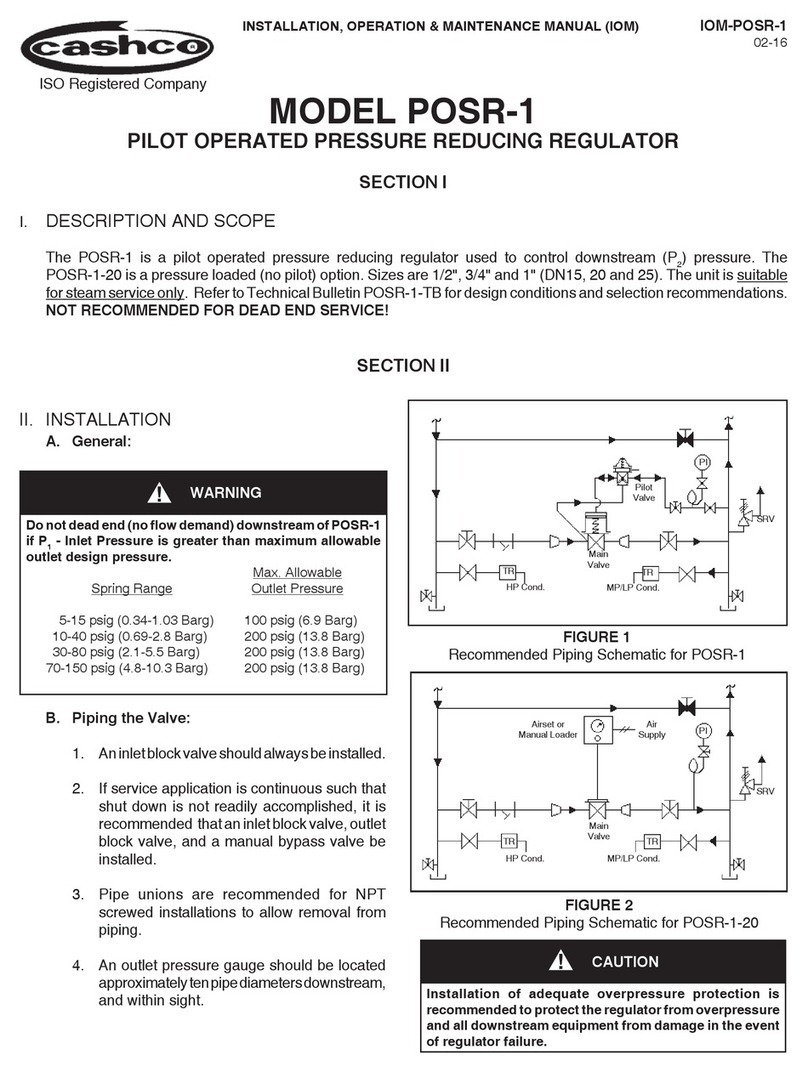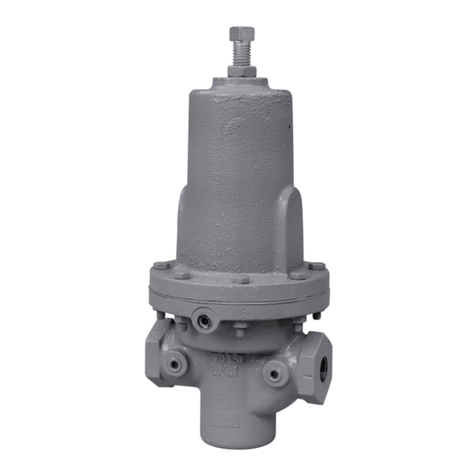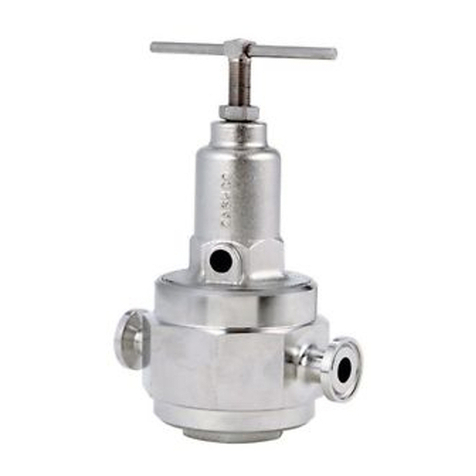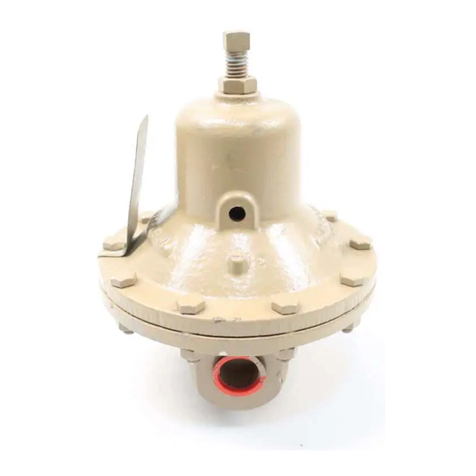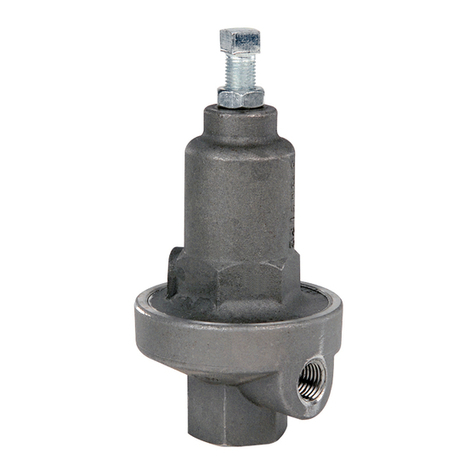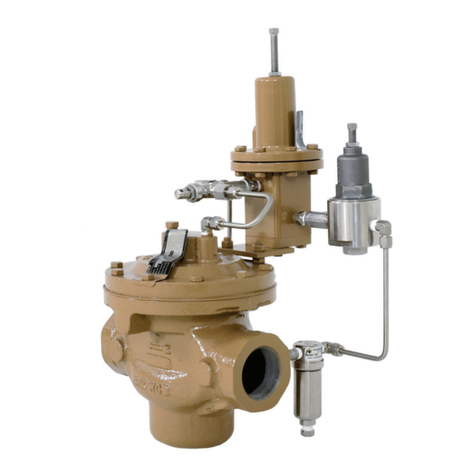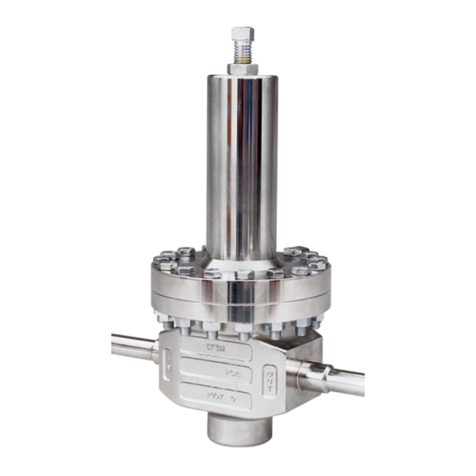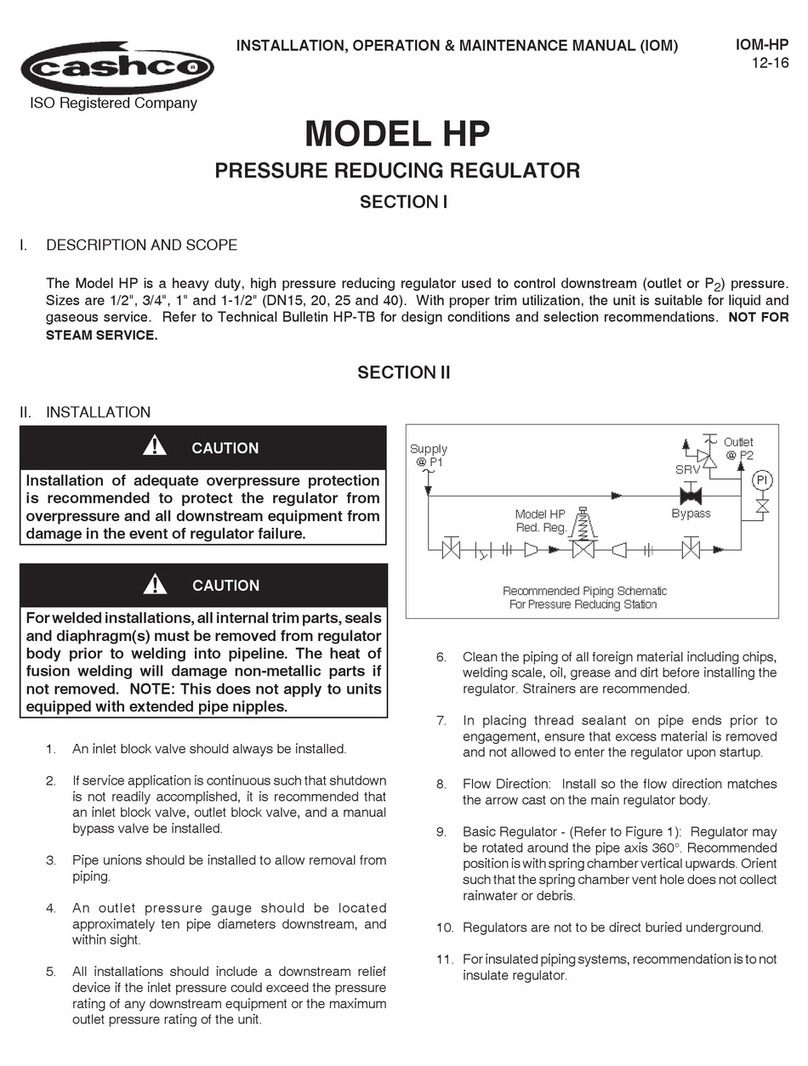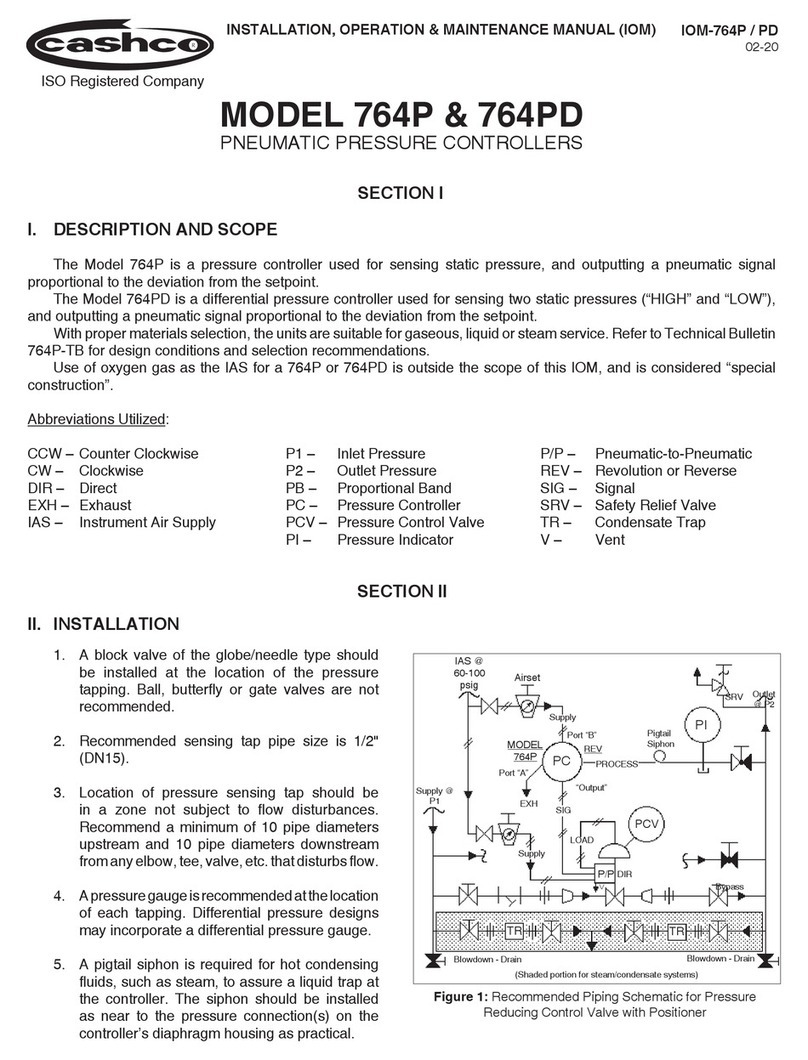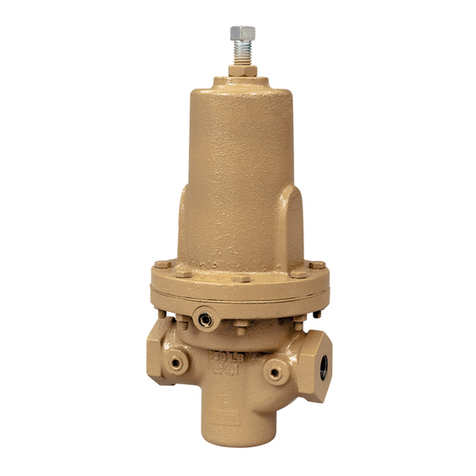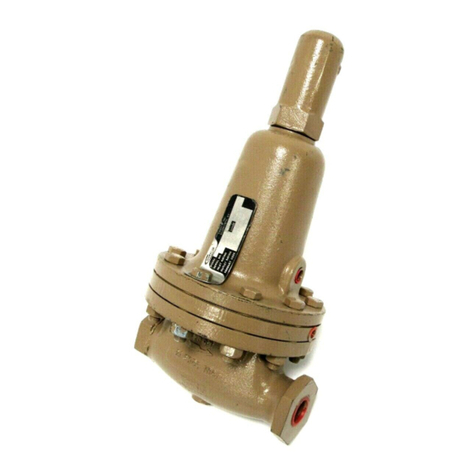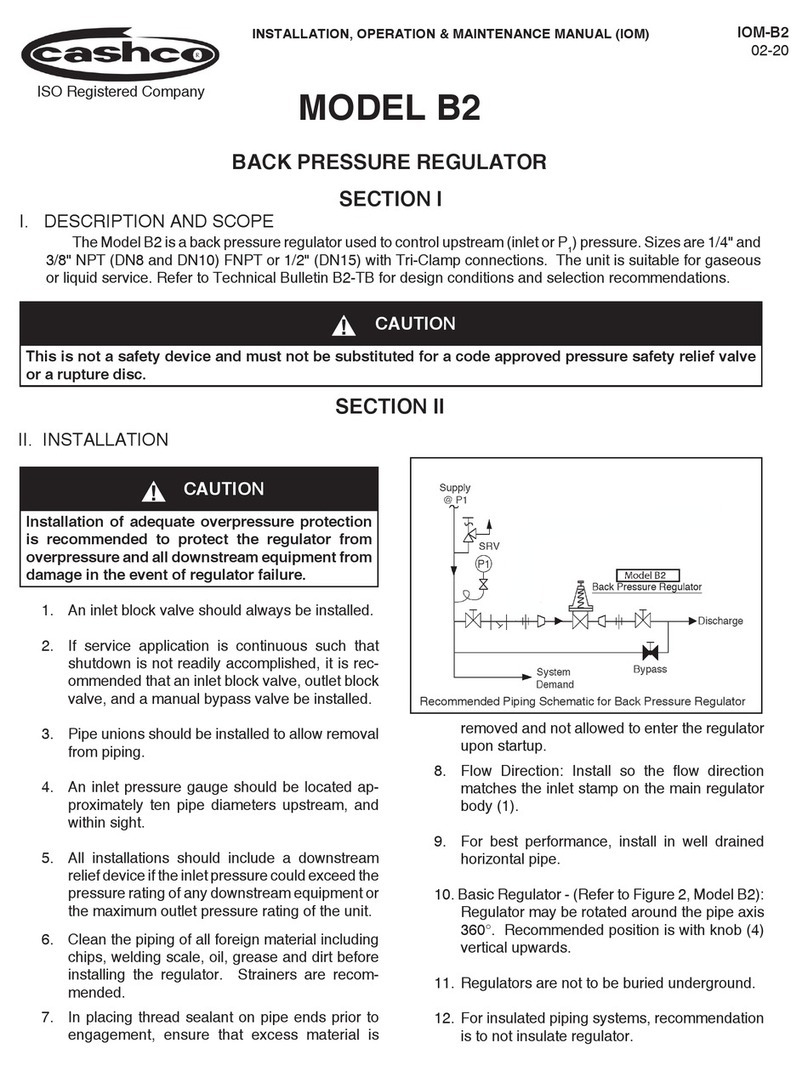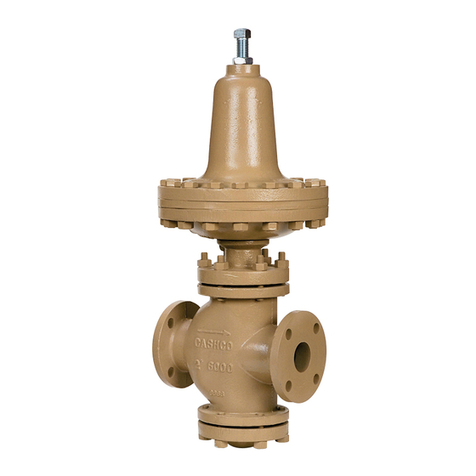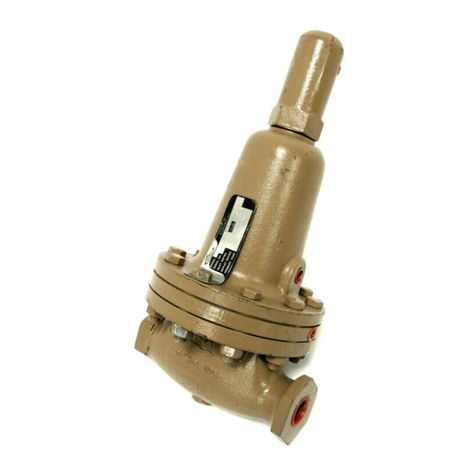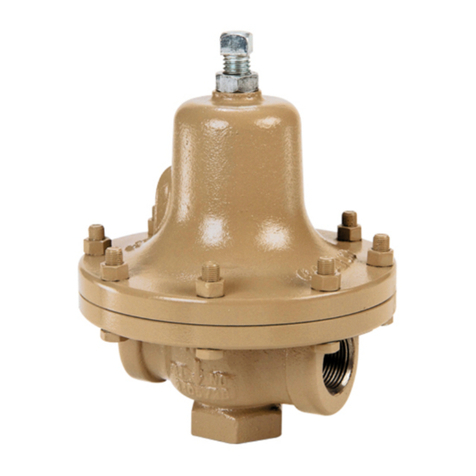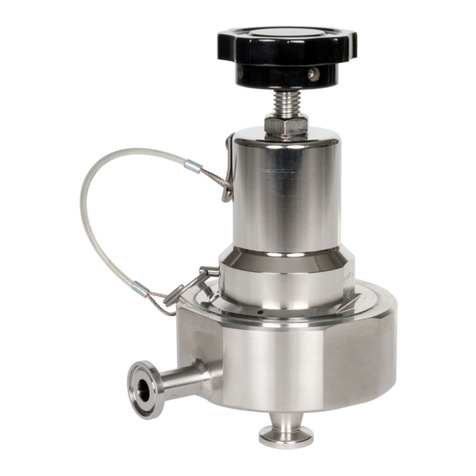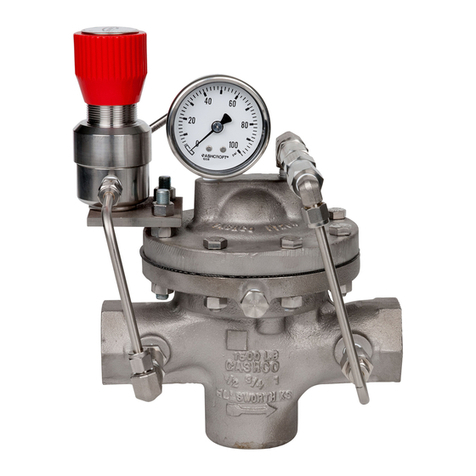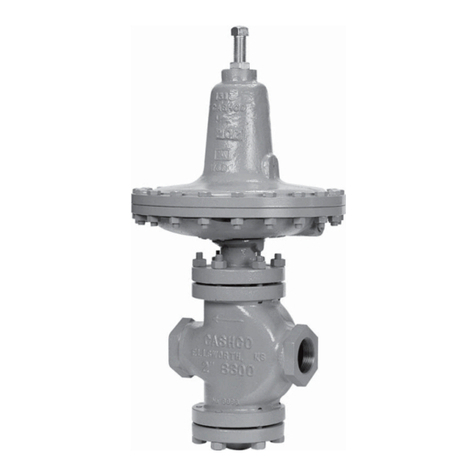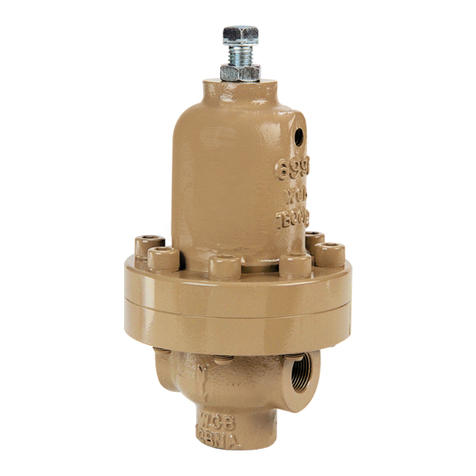
IOM-CA1/SA1 5
seal (27.2) into the groove of the
piston-guide bearing (13).
NOTE: Use NO lubricants!
2. Position cap seal (27.1) ring with
rectangular cross-section at end of
piston-guide bearing (13). Stretch cap
seal over lower end of piston-guide
bearing (13) using thumbs to work the
cap seal onto the piston-guide bear-
ing. DO NOT USE A TOOL FOR THIS
STEP. Continue pressing cap seal
(27.1) upwards towards the groove
until the cap seal “snaps” into the
groove of the piston-guide bearing.
3. Insert shim (16) into cage (19) and
allow to rest inside the cage.
4. Position piston-guide bearing (13)
over and into upper end of cage (19)
until the cap seal (27.1) edge touches
the upper lip of the cage. While gently
applying force to press the piston-
guide bearing (13) into the cage (19),
simultaneously use fingers to lightly
press the cap seal (27.1) inwards into
the groove of the piston-guide bearing
until the cap seal “slips into” the cage
(19). DO NOT use tools or lubricant
to engage the cap seal (27.1) into the
cage (19). DO NOT press downward
on piston-guide bearing (13) too hard
or fast - the cap seal (27.1) may slide
out of its groove and become dam-
aged.
b. Type UC:
1. Position u-cup seal (27.3) over lower
circumference of piston-guide bearing
(13). Ensure the u-cup seal is oriented
with the center-open-downwards as
shown in Figure 1, as the u-cup seal
depends upon the P1-Inlet pressure
to activate proper sealing action.
2. Insert shim (16) into cage (19) and
allow to rest inside the cage.
3. Position piston-guide bearing (13)
over and into upper end of cage (19)
until the cap seal (27.1) edge touches
the upper lip of the cage. Gently apply
downward force to press the piston-
guide bearing (13) into the cage (19).
DO NOT use tools, lubricant, or heavy
force to engage the u-cup seal (27.3)
into the cage.
2. Place properly oriented seat ring (21) onto its
shoulder at the lower end of cage (19).
3. Completion of ITA Reassembly.
a. Insert valve plug (20) upwards through
lower end of cage (19) and through the
center hole of shim (16).
b. Engage valve plug (20) with piston-guide
bearing (13) threads and finger tighten.
c. Place ITA into a vise with smooth jaws
and grasp at hub "flats" location on the
valve plug (20) that is not in the “spindle”
zone. (See Figure 2.)
d. Using a special double-posted spanner
wrench fitting (to order see NOTE in
Section IX, Parts Ordering Information),
tighten the piston-guide bearing (13) to
the valve plug (20) with the following
torque values. Do NOT allow valve plug
(20) to rotate against seat ring (21) during
tightening.
e. This completes ITA reassembly.
Body Size Ft-lbs. (Nm)
3/4"-1" 40–50 (54–68)
1-1/2"–2" 70–80 (95–108)
F. Main Regulator Reassembly:
1. Insert the return spring (22) into the body (23).
2. Fit cage O-ring seal (15) into the body (23)
groove.
3. With the ITA held manually in the closed posi-
tion, insert ITA and cage (19) into body (23).
4. Properly align all three cage bolt (18) holes as
there is only one proper alignment possible.
Apply a downward force to the top of the
cage (19) until the ITA is lowered sufficiently
to engage the cage bolts (18) with washers
(17) into the body (23). Engage all of the cage
bolts , then tighten the cage bolts in alternating
one-half revolution increments to pull down the
ITA evenly. ENSURE THE ITA DOES NOT
BECOME WEDGED AS IT IS SLID INTO
THE BODY. Tighten the cage bolts (18) to a
torque value of 13-15 Ft-lbs (17.5-20.5 Nm).
5. Units with CTFE or VTFE seat ring (21): Due to
the relative "hardness" of the CTFE and VTFE
material, to obtain the best possible shutoff
it is necessary to generate a "coined" seating
chamfer.
6. To coin the seat ring:
a. Close-off the outlet connection.
b. The level of seat leakage can be quanti-
fied at the internal sensing passage.
